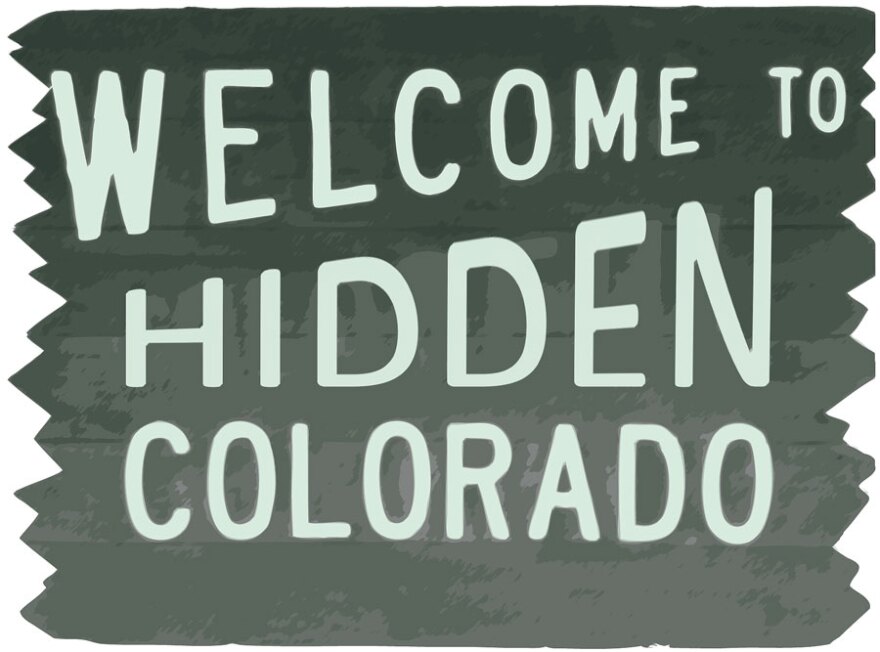At first glance, Hidden Valley Trailhead inside Rocky Mountain National Park doesn’t seem like much. Two lonely structures sit near a small parking lot, surrounded by stunning scenery: white, yellow and purple wildflowers dot a lush, green opening inside a lodgepole pine forest.
What you can’t see is the complicated past of this area. On winter days between the 1950s and 1990s, the mouth of this valley used to hold a ski lodge, ski school and a 500-car parking lot. Hills were dotted with skiers, connected by ski lifts and rope tows.
“The animation here — the sounds,” recalled former director of Hidden Valley Ski Instruction Don Coleman. “The scraping of the skis, the running of the lifts, the clatter of the T-bars, the wind blowing through. It was beyond animation, it was life.”

With bitter wind and just 156 inches of snow in some years, Hidden Valley Ski Area had its challenges.
But Hidden Valley also had 2,000 vertical feet of skiing, and offered $100 season passes. Frequent skiers loved their scrappy resort, and adopted the “If you can ski here, you can ski anywhere” mantra.
When Hidden Valley closed in ’91, Brian Brown, who filmed a 2013 documentary on the ski area, said residents of Greeley, Fort Collins and Loveland lost a lot — including the convenience of having a local ski area.
“It was a perfect storm. We had low snow years, we had the [Estes Valley Parks and Recreation Department] that couldn’t manage the ski area, we had the park service that put so many restrictions on it.” said Brown. “I think the biggest black eye is to Northern Colorado.”
It Started And Ended With NPS
Early expansion of Hidden Valley Ski Area wasn’t driven by calculating commercial entrepreneurs. It was first initiated by the National Park Service.
In the 1930s, NPS approved the construction of ski runs. It plowed Trail Ridge Road so skiers could ski from upper to lower Hidden Valley in the ’30s and '40s. In the ’50s, NPS hired a third party to build and manage a base ski lodge, which was expanded in the 1960s. By the 1970s there was a chairlift.

As the years went on, the NPS mission shifted toward a focus on undeveloped land. It became harder for concessionaires running the resort to find ready access to water for snowmaking or build new ski lifts. A proposal to offer sodas to thirsty tourists during summer months was turned down. Expansion — the drive behind so many ski areas — became nearly impossible.
You can read a 1989 Economic Feasibility Report by the National Park Service that outlined Hidden Valley's challenges.
Finally a 1976 master plan delivered what many believe to be the death knell for Hidden Valley Ski Area.
“They determined that a ski resort was really incompatible with park objectives,” said RMNP Chief Ranger Mark Magnuson, who grew up skiing at Hidden Valley.
It’s a surprising conclusion considering just how friendly NPS’s cousin, the U.S. Forest Service, toward commercial ski resorts. But Magnuson said there’s a key difference.
“The trend in the National Park System is not to have developed ski resorts but to provide recreational opportunities that are less developed.”

Hidden Valley Today
During a hot summer afternoon, Brian Brown and Don Coleman found that a surprising amount of Hidden Valley’s past is still visible.
Hidden in plain sight are remnants of signs, snow fences, ski bindings, concrete lift reinforcements — even black communication lines can be seen poking up from the ground.
“If there was someone who fell in the midway unloading area, they couldn’t see it from the bottom,” Coleman explained. That made telephone lines essential to making sure skiers safely disembarked from ski lifts.

For Coleman, one thing that stopped with Hidden Valley Ski Area is an entry point for Estes Park children into the ski industry.
“I was launched into a phenomenal learning experience,” he said. “I learned about business and running a ski school.”
Coleman moved on to Copper Mountain Resort and worked there for decades. In 2014, he was named ski instructor of the year by Colorado Ski Country USA.
Both men got choked up as they recalled personal stories and tales. The stories in these hills carry an emotional weight. Brown said that of the 47 people he interviewed, 46 were felt a loss when the ski area closed.
“Part of making the film was that wonderful combination of nostalgia and loss — good stories come from that,” he said.
Ultimately, Coleman said the magic of Hidden Valley can be best described by the affect he saw it having on visitors every winter afternoon as they crowded the parking lot to return to Estes Park.
“Everybody would go down and get in all those busses, and go away and say, ‘Man what a day. I’ve got to go back there some time. I want to go back to Hidden Valley,’” Coleman said. “I’ll remember that forever.”
http://www.youtube.com/watch?v=KBym_2La2iU
Explore the map and help us find more of the lost, forgotten or the little-known in the Centennial State. Have an idea? Send us a tip for Hidden Colorado.










